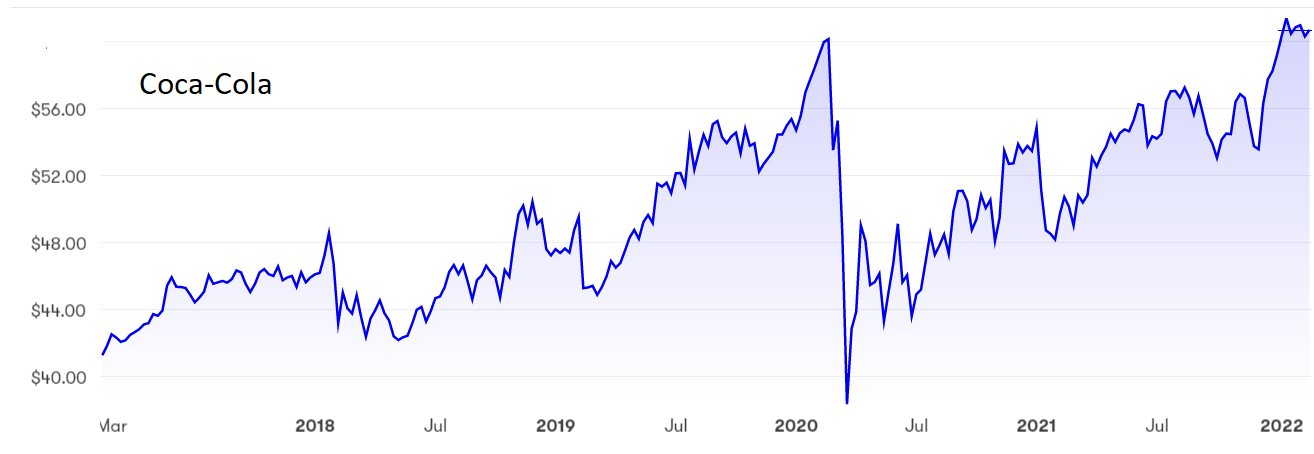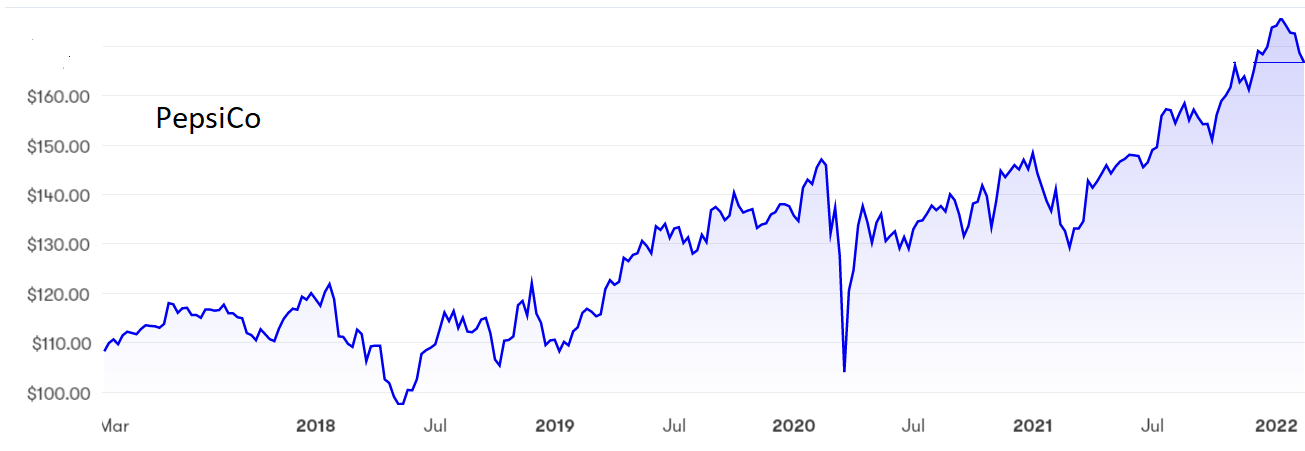Two famous American stocks: buy, hold or sell?
16th February 2022 08:41
by Rodney Hobson from interactive investor
Sales for these two companies have been fizzing, but the big worry is inflation. Our overseas investing expert analyses two global brands.

Cola sales have been fizzing during the festive season. What a pity that inflation is keeping a cap on expectations. Even so, the can is half full rather than half empty.
Coca-Cola (NYSE:KO) and PepsiCo (NASDAQ:PEP) have both managed to make higher prices stick so far, leading to higher revenue than expected at both companies in the three months to the end of December.
Revenue at Coca-Cola, the world’s largest drinks company, rose 10% to $9.5 billion in the final quarter of 2021, as drinks consumed outside people’s own homes rose strongly and the company was able to draw on its experience during the pandemic to manage the business more efficiently.
- Top 10 things you need to know about investing in the US
- Want to buy and sell international shares? It’s easy to do. Here’s how
This completed a year in which volumes grew steadily quarter by quarter. The improvement was patchy but was spread across all markets so that total volumes for the full year were higher than in 2019, thus surpassing pre-pandemic levels.
- Invest with ii: Trade US Stocks & Shares | Share Tips & Ideas | ii Super 60 Investments
Net income leapt 66% to $2.4 billion. The downside was a slippage in operating margins from 27.3% to 22.1% as supply chain constraints and rising wages pushed costs higher, as in so many sectors.

Source: interactive investor. Past performance is not a guide to future performance.
PepsiCo managed a greater percentage rise in revenue in the final quarter, 12.4% to $25.25 billion, but suffered a 28.6% fall in net income to $1.32 billion as it was hit by a sharper rise in general costs and in marketing and administrative expenses than Coca-Cola.
PepsiCo’s sales accelerated throughout 2021 compared with the pandemic-affected 2020. For 2021 overall, revenue increased 12.9% to $79.5 billion and net income rose 7% to $7.7 billion.
- US stock market outlook 2022: more record highs for Wall Street?
- Is PepsiCo’s stock ‘the real thing’?
- Want to know more about US stocks?
The big worry is inflation – and with energy, commodities and distribution all costing more, hopes that the spike will be temporary are looking increasingly overoptimistic as inflation rates hit the highest level for 40 years. The US consumer price index had stood at 7% in December, which was bad enough, so the 7.5% level recorded in January was a nasty shock.
The debate now is not whether the Federal Reserve will raise interest rates next month but by how much.
Neither company is downcast at this scenario and both have strong brands. Coca-Cola expects organic revenue growth around 7% to 8% this year, although it accepts that price inflation on the commodities it buys will be in the mid-single digits, wiping out some of the benefits. Even so, it forecasts that earnings per share will improve by a further 8-10%.

Source: interactive investor. Past performance is not a guide to future performance.
PepsiCo expects some slowdown as the distortions of the pandemic work their way out of year-by-year comparisons, with 6% revenue growth this year, which is still at the high-end of its long-term target range. An 8% increase in earnings per share is forecast.
As a show of confidence, it has raised its full-year dividend by 7% to $4.60 per share from June, and is starting a $10 billion share buyback programme to run over the next four years.
Coca-Cola shares topped $60 for the first time two years ago before falling off a cliff as the realities of Covid-19 struck home. They are now back near their all-time best at $61, where the yield is 2.77%.
- Read more of Rodney's articles here
- Subscribe to the ii YouTube channel for our latest New Year share tips and fund manager interviews
PepsiCo has had a more steady upward climb to reach $175 compared with $100 nearly four years ago, though it too is just off its recent best at $166. The yield is currently 2.55%.
Hobson’s choice: long-term shareholders in both companies have had a good ride and recent weakness is no cause for panic. Coca-Cola looks fully valued for now but rate a buy if they slip below $60 again. I previously recommended the company on two separate occasions below $50. The case for PepsiCo is less clear-cut but if the shares slip below $154, then buy as I suggested in October.
Rodney Hobson is a freelance contributor and not a direct employee of interactive investor.
These articles are provided for information purposes only. Occasionally, an opinion about whether to buy or sell a specific investment may be provided by third parties. The content is not intended to be a personal recommendation to buy or sell any financial instrument or product, or to adopt any investment strategy as it is not provided based on an assessment of your investing knowledge and experience, your financial situation or your investment objectives. The value of your investments, and the income derived from them, may go down as well as up. You may not get back all the money that you invest. The investments referred to in this article may not be suitable for all investors, and if in doubt, an investor should seek advice from a qualified investment adviser.
Full performance can be found on the company or index summary page on the interactive investor website. Simply click on the company's or index name highlighted in the article.
Disclosure
We use a combination of fundamental and technical analysis in forming our view as to the valuation and prospects of an investment. Where relevant we have set out those particular matters we think are important in the above article, but further detail can be found here.
Please note that our article on this investment should not be considered to be a regular publication.
Details of all recommendations issued by ii during the previous 12-month period can be found here.
ii adheres to a strict code of conduct. Contributors may hold shares or have other interests in companies included in these portfolios, which could create a conflict of interests. Contributors intending to write about any financial instruments in which they have an interest are required to disclose such interest to ii and in the article itself. ii will at all times consider whether such interest impairs the objectivity of the recommendation.
In addition, individuals involved in the production of investment articles are subject to a personal account dealing restriction, which prevents them from placing a transaction in the specified instrument(s) for a period before and for five working days after such publication. This is to avoid personal interests conflicting with the interests of the recipients of those investment articles.